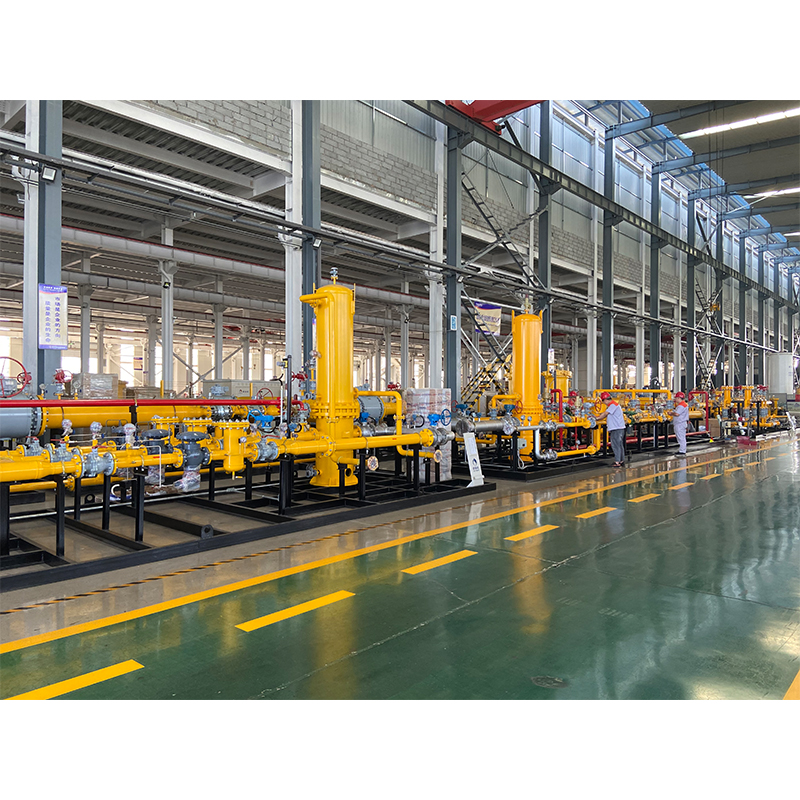
Nov . 30, 2024 04:40
Back to list
gas coalescer
The Role of Gas Coalescers in Industrial Processes
In industrial settings, the quality of gases plays a crucial role in ensuring efficient operations and optimal product outcomes. One essential piece of equipment utilized to enhance gas quality is the gas coalescer. A gas coalescer is designed to remove liquid contaminants from gas streams, improving the overall purity of the gas while minimizing potential damage to downstream equipment and processes.
Understanding Gas Coalescing
At its core, gas coalescing operates on the principle of phase separation. In various industrial applications, gases may become contaminated through moisture, hydrocarbons, or other particulate matter. These contaminants can lead to corrosive effects, reduce efficiency, and even lead to system failures if left unchecked. Gas coalescers effectively address this issue by employing a specially designed filter media that allows gas to flow through while capturing these unwanted liquids.
The coalescing process works by taking smaller droplets of liquid that may be dispersed within the gas stream and combining them to form larger droplets. Once the droplets reach a sufficient size, they become heavy enough to separate from the gas stream due to gravitational forces. The design of coalescers typically incorporates multi-stage filtering, allowing for the progressive removal of varying droplet sizes, thus enhancing the quality of the gas exiting the system.
Applications of Gas Coalescers
Gas coalescers are widely used across various industries including oil and gas, food processing, pharmaceuticals, and chemical manufacturing. In the oil and gas sector, these devices are instrumental in separating water and hydrocarbon contaminants from natural gas before it undergoes further processing or transportation. Clean gas is essential for safe and efficient operations, as contaminants can lead to pipeline corrosion and operational inefficiencies.
In the food processing industry, maintaining gas purity is vital to meet health and safety standards. Compressed gases, such as carbon dioxide and nitrogen, are often used in packaging and preservation processes. By utilizing gas coalescers, producers can ensure the gases used are free from moisture and other impurities that could compromise food quality.
Similarly, in pharmaceutical manufacturing, gas coalescers help maintain the integrity of gases used in production and packaging processes. Ensuring that gases are free of contaminants is especially critical in this sector to comply with stringent regulatory requirements and to avoid compromising product efficacy.
gas coalescer

Benefits of Using Gas Coalescers
The implementation of gas coalescers offers numerous benefits to industries that require high-quality gas. By efficiently removing liquid contaminants, these devices enhance the reliability and performance of downstream equipment such as compressors and turbines. This leads to reduced maintenance costs and longer service life for machinery, ultimately contributing to lower operational expenses.
Additionally, gas coalescers help improve product quality by ensuring that the gases used in various processes are clean and devoid of impurities. In industries such as pharmaceuticals and food processing, this is paramount for meeting regulatory compliance and maintaining consumer trust.
Furthermore, by improving the overall efficiency of gas systems, coalescers can contribute to energy savings. Cleaner gas is more efficient during combustion, which can lead to reduced fuel consumption and lower greenhouse gas emissions, promoting a more sustainable operation.
Maintenance and Considerations
While gas coalescers provide essential functions, they also require proper maintenance to remain effective. Regular inspection and replacement of filter elements are crucial in ensuring optimal performance. Operators must be aware of the specific needs of their systems and establish a maintenance schedule that reflects the operational environment's demands.
It is also essential to consider the design and materials of the coalescer itself. The selection of appropriate media, housing materials, and configuration plays a significant role in the efficiency and effectiveness of the coalescing process. Factors such as temperature, pressure, and gas composition should all be taken into account when choosing a gas coalescer.
Conclusion
In summary, gas coalescers are vital components in the industrial landscape, playing a crucial role in enhancing gas quality and protecting costly equipment. Their ability to remove liquid contaminants not only improves operational efficiency but also contributes to product safety and compliance across various industries. By investing in reliable gas coalescing technology and maintaining these systems, businesses can achieve significant operational advantages and enhance their sustainability efforts.
Next:
Latest news
-
Safety Valve Spring-Loaded Design Overpressure ProtectionNewsJul.25,2025
-
Precision Voltage Regulator AC5 Accuracy Grade PerformanceNewsJul.25,2025
-
Natural Gas Pressure Regulating Skid Industrial Pipeline ApplicationsNewsJul.25,2025
-
Natural Gas Filter Stainless Steel Mesh Element DesignNewsJul.25,2025
-
Gas Pressure Regulator Valve Direct-Acting Spring-Loaded DesignNewsJul.25,2025
-
Decompression Equipment Multi-Stage Heat Exchange System DesignNewsJul.25,2025

